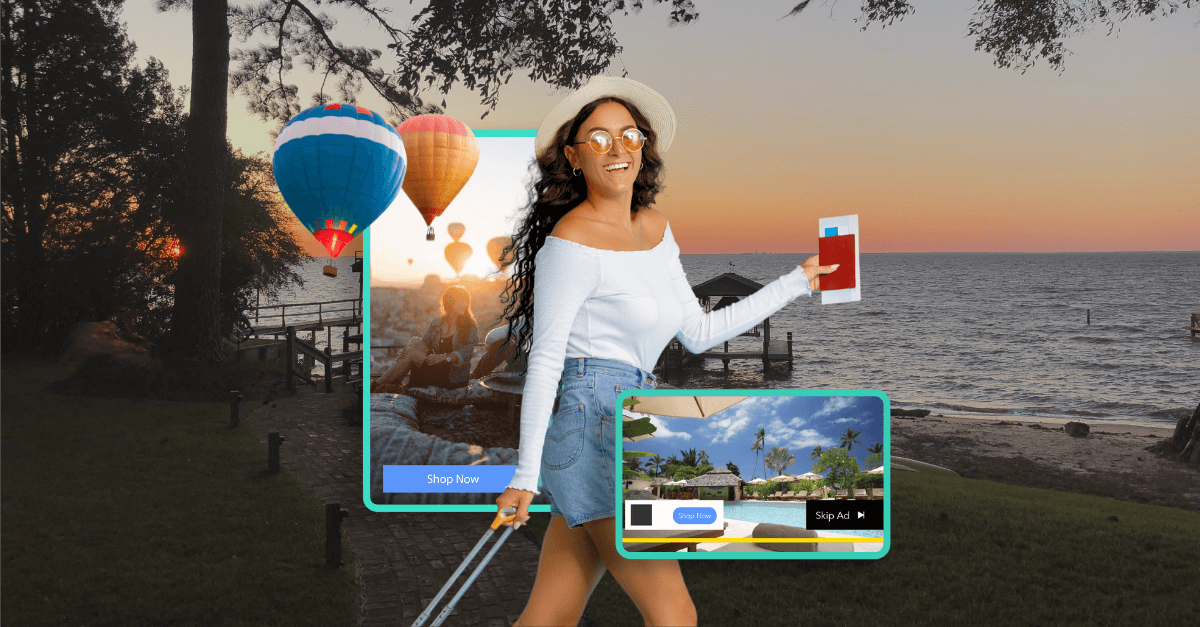Month: August 2023
Responsible Advertising: 4 Examples & 3 Ways to Improve Your Brand Perception
Responsible advertising is a phrase that often confuses people. Brands looking for ways to promote themselves and cultivate trust with their target audience must learn how to abide by company values, cultural expectations, and consumer demands. It’s a fine line to toe, and pulling it off right can be tricky.
Responsibility in advertising means holding your company accountable and respecting your audience while staying true to your brand.
In this blog, we’ll explore what responsible advertising looks like and provide strategies you can use to better resonate with your target audience.
What Is Responsible Advertising?
Responsibility in advertising is a method of providing products, services, content, and ads that are neither harmful nor offensive, and follow an ethical standard. It also often means being authentic, aligning with popular values, and focusing on modern-day problems.
Approximately 64% of consumers will support or boycott a brand because of their stance on a social issue. And about 88% of consumers state that authenticity matters to them when deciding which brands to support.
These numbers demonstrate how advertising continues to change as customer demands evolve, but it’s important to note that responsibility in advertising is about more than just brand support of a worthy cause. It’s also about being direct with your message and understanding what your consumers care about in the modern era.
Brand Examples of Responsible Advertising
Responsible advertising can come in many forms, including marketing campaigns that advocate for solutions to worldwide problems. Here are four responsible advertising examples from recognizable brands:
1. Pfizer: Celebrating Global Health Innovators
Pfizer demonstrated how brands can use their advertisements responsibly. As part of its ongoing Global Health Innovation Grants program, Pfizer supported community-based initiatives across the world to improve access to healthcare services.
Their Global Health Innovators ad shows a glimpse of their commitment to using their publicity to raise awareness about a global challenge.
2. Google: The Picture Perfect Life
In 2018, Google released its Picture Perfect Life ad to showcase that there’s much more to a person’s story than what we see behind a lens. In the ad, you see people seemingly going about their lives. However, you soon realize that there’s a darker story behind the glamorous shots viewers see.
This ad aims to help change the national conversation about mental illness. The ad’s message—that people aren’t always as happy as they pretend to be on social media—has global appeal. But perhaps the biggest draw of the ad is Google’s quiet, subtle messaging. By approaching this sensitive topic in an understated way, the ad becomes powerful and thought-provoking.
3. Dove: Real Beauty Sketches
Dove demonstrated its commitment to redefining beauty and helping change the public perception of it with its Real Beauty Sketches campaign. In this ad, a sketch artist asks women to describe themselves before asking strangers to describe the same person.
It turns out the participants were very self-critical about their image. The ad is an emotional testament to body positivity. It also demonstrates how DOVE remains consistent with their brand message of self-beauty.
4. Patagonia: Worn Wear Program
Patagonia is another brand that exhibits authenticity and a commitment to its company values. Their Worn Wear Program allows consumers to purchase, use, and sell used clothing and other products. The program is a reminder of how Patagonia is focused on creating marketing initiatives that align with its core beliefs about waste reduction.
They don’t turn their backs on their mission statement. Instead, they remain devoted to their company values and look for ways to spread that commitment via marketing campaigns.
Best Practices on Responsible Advertising
Creating responsible ads is easier said than done. Brands need to take a stance on positivity while protecting their image. Here are three practices to follow if you want to be more responsible with your ads:
1. Have a Call-To-Action with Real Values
These days, it’s not enough for companies to create ads that promote the latest products and services. This is not only an outdated marketing tactic but can also seem deceiving. Instead, brands should offer messaging that adds real value to a person’s life or contributes to the greater cultural conversation.
This REI Will You Go Out With Me ad is a flawless example of a company promoting something greater than material goods. In the ad campaign, REI asks its customers to set shopping aside and seek outdoor adventurers instead.
Consumers responded well to this ad, thanks to its clear call-to-action and hyper-targeted messaging. REI shoppers are nature-loving, outdoorsy adventurists, so REI’s “Get Outside” message aligned well with their values.
2. Be Authentic and Put Consumer Needs First
Prioritizing customer needs is another way of saying you understand their desires and expectations. If you fail to do this, your consumers won’t connect or resonate with your ads. Ask yourself: Are my ads making an honest change in people’s lives?
Ask: Is my company keeping its promises and not deceiving consumers? Customers can see right through fake claims or misleading ads. Your ads should remain authentic with messages that reflect your company’s values.
The more you prioritize your consumers and stay true to your organization’s values, the easier it will be to become more responsible with your advertising techniques.
3. Be Cautious with Controversial Material
Advertisements that discuss societal issues can be a hit-or-miss opportunity because some viewers might interpret them as too controversial, or worse, not in line with their values.
You need to find ways to align your content with GARM standards. This doesn’t mean you should avoid discussing societal problems out of fear that some might interpret them as offensive. Rather, you need to remain cautious and serve inclusive, culturally appropriate ads that convey the right message.
Improve Your YouTube Advertising Campaign with Channel Factory
Responsible advertising allows brands to connect with customers on a deeper level while staying true to their brand image. If you’re running a YouTube campaign and need viable solutions to improve your advertising efforts, Channel Factory can lend a hand.
Our contextual alignment solutions ensure that your ads are placed with relevant content that resonates with your target audience.
Get in touch with us to learn more about how we can maximize your YouTube marketing efforts.
Why Video Advertising Works (And How to Use It Effectively)
In the world of advertising, video has emerged as a powerful tool in today’s digital landscape. Video advertising is at an all-time high—92% of marketers prioritize video ads for the high ROI potential.
From high click-through rates to increased lead generation, here’s why video advertising works to drive results and help businesses connect with their target audience.
Why Video Advertising Works
Videos have an innate ability to capture audience attention in a way other advertising mediums cannot. Video advertising leverages short, compelling video content to engage audiences, promote brand awareness, and educate consumers all at once. An average of 90% of marketers say video significantly increases dwell time, traffic, leads, and sales. As a whole, the video advertising industry holds immense potential for growth and innovation.
This is because consumers love video content. It’s easily accessible and available across a wide variety of devices and channels. Digital video consumption is at an all-time high, with demand for branded video content increasing among 91% of consumers. It’s easy to see why—what viewers find on the other end of a click can pay off in many ways, whether that’s increased knowledge, helpful instruction, or even pure entertainment.
For video marketing, this creates unprecedented opportunities. Unlike written or graphic ads, a single video ad:
- Meets consumers in the familiar digital spaces they already use
- Works across multiple social media platforms
- Conveys a lot of information in a short span of time
- Can be compatible with mobile, desktop, and other streaming devices at once
Unlike written content or static imagery, video also has the power to captivate customers through dynamic motion, sound, and narrative, making potential customers more receptive to a brand’s message.
Video advertising often leaves a lasting impression on viewers, increasing brand recall to more than double what it is for non-video ads—which explains why video marketing is on a significant upward trend.
9 Advantages of Video Advertising
Video advertising offers a myriad of benefits to elevate marketing efforts. Here are eight key advantages of the video advertising revolution:
1. They’re Easy to Share
One of the greatest advantages of video advertising is its inherent shareability. With just one click, users can share videos with their friends and family, generating organic exposure. In a world where our collective attention spans are getting shorter every day, it makes sense that videos would get shared more than other forms of advertising—They’re able to convey a lot of information in a short amount of time.
2. They Have a Greater Potential to Go Viral
Because videos have become such a popular way to share information, the most engaging among them has the potential to go viral and rapidly expand a company’s reach in an impressively short period.
Some of the best video advertising examples feature familiar concepts such as pets, DIY recipes, familiar faces, and inspirational stories that aim to connect and inspire, increasing the likelihood users will share them.
3. They’re Educational
From product tutorials to informative explainers, videos are the ideal medium for educational content. The vast majority of audiences, 72% to be exact, prefer video over text when learning about a product or service. Well-made videos can help to establish a brand as an industry authority through step-by-step guides or with content that engages viewers from the comfort of their own homes.
4. They Boast Higher Click-Through Rates
Compared to other forms of advertising, video ads consistently draw more clicks. Users are more likely to click on an interesting thumbnail to explore further. Videos are naturally more interactive and engaging than other advertisements, which can compel viewers to take action to visit a website, check out a landing page, or even make a purchase.
5. They’re Accessible and Familiar
A significant reason why video advertising works so well is its ability to meet audiences where they are. Mobile users are able to engage with videos anywhere they have a connection.
Videos can be found on social media platforms, video-sharing websites, and mobile apps, and can be seamlessly integrated into a variety of digital environments. A brand’s message can reach the right audience regardless of the audience’s preferred platform or device.
6. They Establish Credibility
Videos help businesses to showcase their services and expertise with appealing visuals and valuable insights. With video ads, there are numerous avenues to demonstrate authority and credibility using every facet of production.
Content can demonstrate solutions, present testimonials, and tell a story that builds trust and authenticity with viewers. Ultimately, this can go a long way in developing a positive perception of a brand.
7. They’re Excellent for SEO
Search engines like Google boost search results that feature excellent video content. Why? Because they know it enhances the user experience.
This means video advertisements are a powerful way to drive organic traffic. By optimizing videos with relevant keywords, whether that’s through titles, descriptions, or transcripts, brands can significantly increase their site’s visibility and rank higher in results pages.
8. They’re Digestible
As the demand for bite-sized information grows, video advertising offers an increasingly concise way to deliver engaging content in a potent package. In seconds, videos can convey complex information and deliver key messages, all while evoking emotion and capturing audience attention.
In fact, short-form videos are largely the most engaging. The ability of video ads to condense information into one visually appealing format more effectively ensures that a brand’s message can resonate with users.
9. They’re Highly Profitable
Compared to static ads, dynamic video ads boast a 48% higher sales conversion rate. Viewers are four times more likely to turn to YouTube for information about a brand, product, or service than other sources and two times more likely to make a purchase if they saw a product featured in a video.
Much of this is due to the value of video content, both in building trust with your audience and targeting consumers through personalized content. Videos are a great way for viewers to see a product or service in action, which can do a lot to convert them to make a purchase.
Enhance Your Video Content
The world of video advertising has advantages that are only expected to expand as the digital world evolves. The right marketing strategies can elevate your video content, maximizing brand recognition and enhancing user engagement.
Channel Factory understands why video advertising works—and how to leverage your content to boost your brand. Discover how we can help your YouTube advertising efforts.
Contact us for more information and to get started with a more powerful video campaign strategy.




